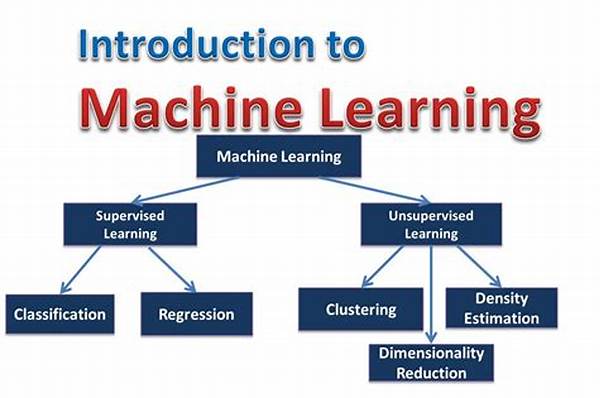Machine learning is a fascinating field that has roots embedded in artificial intelligence, offering transformative solutions across industries. As you embark on your journey with this introduction to machine learning basics, you’ll uncover a world of possibilities where computers learn patterns from data, enabling them to make decisions with minimal human intervention. Imagine you have a magical apprentice capable of recognizing patterns in massive datasets — that’s machine learning at its core! From personalized recommendations when streaming your favorite series to the very search engines guiding you daily, machine learning is here, there, and everywhere.
As the digital age surges ahead, understanding the basics of machine learning becomes ever more crucial. It’s not merely a skill reserved for tech wizards or data scientists; it’s a powerful tool accessible to anyone willing to explore its potential. Businesses of all sizes harness the magic of machine learning to predict customer behavior, streamline operations, and gain a competitive edge in a bustling marketplace. This introduction to machine learning basics is not just about technological prowess but about sparking your curiosity, igniting your innovative spirit, and empowering you with tools that drive real change.
Whether it’s an exclusive service ensuring you never run out of your favorite products or a witty chatbot making your customer service interactions amusing and efficient, machine learning is transforming user experiences globally. So, still curious about how you can leverage its power? Let’s unpack these basics and dive deeper into the riveting realm of machine learning.
Why is Machine Learning Essential Today?
In the current digital era, data is omnipresent, and those who can make sense of it hold the key to future innovations. Machine learning equips you with the capability to mine these vast data resources, transforming them into valuable insights. The demand for machine learning expertise is skyrocketing in the job market, making it an indispensable skill in today’s job environment.
—
As you dive deeper into the introduction to machine learning basics, you will come across terms that form the backbone of this field. Let’s explore these core components through an engaging narrative that seamlessly weaves technical insights with everyday analogies.
Machine learning operates primarily on three crucial elements: data, algorithms, and models. Data is the lifeblood of machine learning; it’s like the nourishing soil feeding the roots of a flourishing plant. Every piece of data feeds into algorithms, which, in essence, are a set of rules or instructions that guide the learning process. Imagine algorithms as the chef following a recipe to create a delectable dish — the better the recipe, the better the outcome!
The models are the end products of this entire process. They are trained using algorithms and data to identify patterns, make predictions, or even generate creative content. Models are like the finished artwork painted with precision by artificial intelligence — ready to be marketed and used to make informed decisions.
Diving into the Types of Machine Learning
The Big Three: Supervised, Unsupervised, and Reinforcement Learning
In this section of introduction to machine learning basics, you’ll learn about the types that form the foundation of machine learning itself. Each type represents a different approach to teaching machines to learn.
1. Supervised Learning: Think of it as having a tutor guide your studies. In supervised learning, the machine is given the correct answers (labeled data) to learn from, like a student learning from a textbook.
2. Unsupervised Learning: Here, the machine is left to discover patterns on its own without guidance. Imagine you’re in a new city, exploring without a map — you’ll start recognizing landmarks and pathways, forming a mental map over time.
3. Reinforcement Learning: This type behaves like training a pet through rewards and punishments. Machines learn to perform tasks by rewarding them for correct actions, honing their skills through trial and error.
The competitive edge that machine learning provides extends to multiple facets of life — from personalized marketing campaigns ensuring that customers receive tailored experiences to financial systems detecting fraudulent activities before they escalate. Embrace this introduction to machine learning basics, and let it propel your journey into a future powered by smart technology.
—
Here are nine engaging discussion points to enhance your understanding and explore different angles regarding machine learning:
##
When it comes to discussing the introduction to machine learning basics, it’s crucial to recognize the role that widespread engagement plays in demystifying the concept. Machine learning, while rooted in complex algorithms and scientific computing, is made accessible through engaging narratives and a sense of community dialogue. In this modern age, forums and collaborative platforms become pivotal in fostering understanding, generating innovative solutions, and spreading knowledge widely across virtual environments.
Whether you’re a budding enthusiast or an experienced professional, initiating conversations around real-world applications, innovative practices, and useful tools can enhance your comprehension and unleash creative potential. Understanding these basics allows you to share and grow within a community continuously pushing the boundaries of what’s possible. Engaging in such fruitful discussions helps foster a culture of learning, keeping you updated with the ever-changing landscapes of technology and machine learning.

